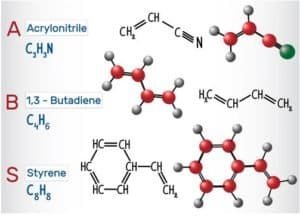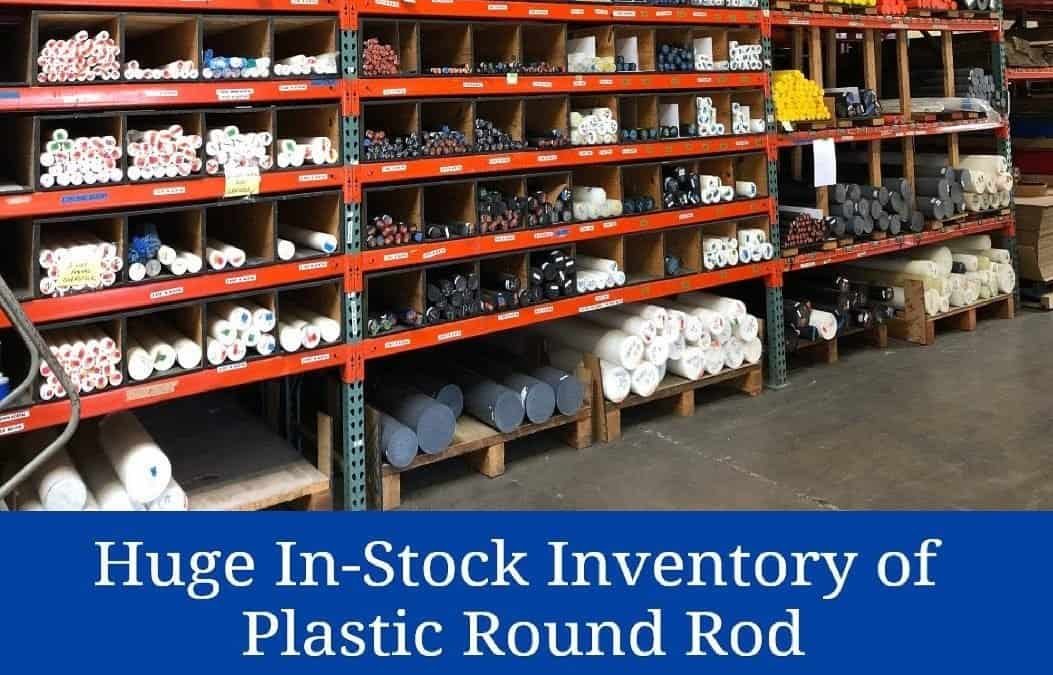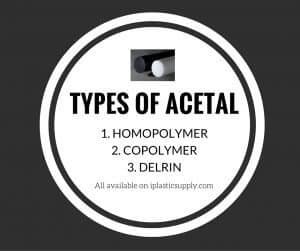
Comparing ABS to Acetal Sheets and Rod
Acetal Copolymer Sheet vs. ABS Sheets and Rods
Acetal Copolymer and ABS (Acrylonitrile-Butadiene-Stryene) have some similar properties but are really very different materials. They similarities are: high impact strength, ease of machining with standard cutting tools and good mechanical properties. They are also both FDA compliant and are both good substitutes for brass. They also have great water absorption resistance and good electrical properties. Both materials are good for some of the same applications but certainly not all. Listed below are some of the major differences.
ABS Sheet and Rod Information
- ABS comes as Natural (straw) and Black color in Plate, Slab, Sheets and Rods, and thin sheet (.040″ – .250″) it is available as White or Black with a textured surface one side. It can be cut from 48″ X 96″ sheets into strip, panels or pieces.
- ABS is formable. ABS is a great thermo-formable material while Acetal is not. Acetal is used more for machined parts such as gears and screws. ABS is great for molding and shaping parts from vacuum to heat forming. Excellent for model building and prototype projects.
- ABS is easily bondable (similar to PVC). ABS can be bonded or welded to itself. Because Acetal is self lubricating, it is not possible for anything to stick to it unless etching is done – therefor it is not bondable.
- ABS is a great material for painting and silk screening. While Acetal can not be painted or silk screened unless it has undergone Corona Treating (a flame surface treatment), but if treated will nice paint or screened surface.
- ABS has better chemical resistance than Acetals. Both are attacked by acids like sulfuric, but ABS has a wider range of resistance to chemicals like aqueous acids, alkaline and alcohol. Acetal will degrade when exposed to such chemicals as chlorine and alkaline.
- Specialty grades of ABS are available, including: Glass Filled, Static Dissipating, and Fire Retardant Grades (like Royalite – R59)
ABS Typical Properties Table
| General Property | ASTM Test | Value |
| Specific Gravity | D7921 | 1.08 – 1.25 |
| Tensile Strength | Yield D638 | 4,100 |
| Izod Impact – Notched | D256 | 7.7 |
| Hardness – Rockwell | D785 | R105 |
| Deflection Temp @ 264psi | D648 | 177 |
| Co. Thermal Expansion | D696 | 5.3X10-54.6 -5.5X10-5 |
Acetal Copolymer and Homopolymer Sheet and Rod Information

ABS Resin Structure
- Acetal is the better machining plastic, considered the best machining plastic material. Because of its durability and wear resistance, Acetal is an excellent choice for producing a wide variety of parts that require high wear resistance over a wide period of time. When machining to tight and specific tolerances, Acetal is ideal.
- Acetal has low co-efficient of friction. Due to its self lubricating properties, it is a great material for sliding and wear applications. This material provides years of maintenance free bushings and bearings.
- Acetal sheet is produced from .062″ – over 6″ thick and sheet sizes of up to 48″ X 120″ as standard. The standard color for Acetal and Delrin is Natural (a deep milky white) and Black. Some colors are available as Medical Grade, and can be obtained in limited sizes. These sheet are available cut to: slabs, blocks, plates, slabs and blocks.
- Acetal (Polyoxymethylene) can be both a homopolymer and a copolymer. The homopolymer acetal has a repeating chain of one atom while the Acetal copolymer has two atoms forming a repeating chain. Dupont™ Delrin® is a popular acetal homopolymer brand name and the most commonly used acetal homopolymer.
Acetal – Delrin Properties Table
| General Property | ASTM Test | Typical Value Unfilled Homo-Polymer | Typical Value Unfilled Co-Polymer |
| Specific Gravity | D792 | 1.42 | 1.40 |
| Tensile Strength Yield | D638 | 9,600 – 11,000 | 9,000 – 10,200 |
| Tensile Modulus | D638 | 450,000 | 400,000 |
| Izod Impact – Notched | D256 | 1.2 | 1.0 |
| Hardness – Rockwell | D785 | M94 | M90 |
| Deflection Temp @ 264psi | D648 | 257 | 220 |
| Deflection Temp @ 66 psi | D648 | 347 | 335 |
| Water Absorption @ 24 hrs | % | 0.24 | 0.25 |
| Co. Thermal Expansion | D696 | 6.83X10-5 | 5.4X10-5 |
ABS and Acetal – Similar, but very different materials
Both of these materials possess excellent qualities and have a wide range of different uses. Acetal is great for machining, while ABS is great for forming and bonding. They both can be used for machined parts and are great choices for food contact and electrical applications. These two materials are both strong and durable plastics, but one might be better than the other for a specific job. When picking the right plastic, it is important to compare plastics and their specific properties to make sure the material won’t fail and that your job will be successful.
Contact us for additional information, call us at 866-832-9315 or contact us here. Consider Industrial Plastic Supply for all your plastic needs, we want to be your go-to plastic supplier.
**Note: Delrin® is a registered Trademark of Dupont

